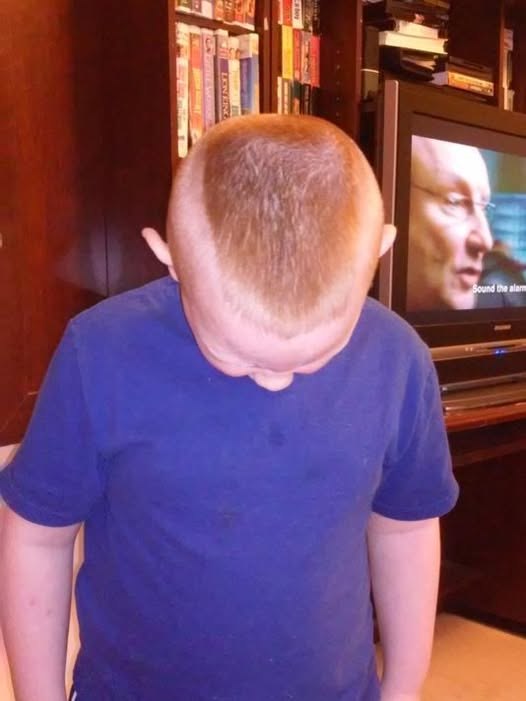Last Thursday, when I picked up my eight-year-old son Levi from school, I noticed something was wrong right away. He wasn’t his usual bubbly self, and instead of greeting me with his usual stories about his day, he silently handed me a folded note from the principal.

I opened it and was shocked to read that Levi’s haircut—a short, military-style cut—was considered a violation of the school’s dress code because it was supposedly “too aggressive.” I couldn’t believe it. This haircut wasn’t flashy, distracting, or inappropriate in any way. It was clean, neat, and completely respectful. More importantly, it was a style Levi had chosen because he wanted to look like his uncle, who serves in the military and whom he deeply admires. For an eight-year-old boy, that kind of admiration means everything, and being told that his haircut was somehow “aggressive” left him confused and visibly upset.
I wasn’t about to let this go without getting answers, so I contacted the school first thing the next morning. During my call with the administration, I discovered that another boy in Levi’s class, Everett, had the exact same haircut but hadn’t received any disciplinary note or warning. That made the situation feel even more unfair, and I immediately scheduled a meeting with the principal to talk in person. When I met with him, he reiterated that military-style haircuts could be interpreted as “aggressive” within the context of the school’s policy, which aimed to promote a neutral and inclusive environment. But when I asked why Levi was singled out while another student with the same haircut wasn’t reprimanded, he didn’t have a clear answer.
That inconsistency didn’t sit right with me. I knew there had to be something else going on behind the scenes, something personal that was influencing this decision. It wasn’t long before I heard from another parent that Levi’s teacher, Ms. Reeves, might be struggling with unresolved feelings about her father, who was a veteran and had passed away from complications related to PTSD. That piece of information added a layer of understanding, though it didn’t excuse what had happened. Still, I believed it was worth having a calm and honest conversation, so I reached out to Ms. Reeves directly.
To her credit, Ms. Reeves responded with genuine sincerity. She asked to speak with me and explained that seeing Levi’s haircut unexpectedly triggered emotions she hadn’t fully processed since her father’s passing. She admitted that, without even realizing it, she had let her personal grief influence her reaction and judgment. She apologized for projecting her pain onto Levi and acknowledged that it was wrong to single him out. Following our conversation, we scheduled another meeting with the principal. During that meeting, the disciplinary note was officially revoked, and Ms. Reeves also spoke directly to Levi to make sure he understood that none of this was his fault. She reassured him that his haircut was completely acceptable and that she had made a mistake by reacting the way she did. Levi, though still a bit shaken, was relieved to know he wasn’t in trouble anymore.
While the issue had been resolved, the entire situation stayed with me. It reminded me how important it is to stand up for what’s fair and right, especially when it involves our children. At the same time, it also reminded me that people carry invisible wounds, and sometimes those wounds influence their behavior in ways they don’t immediately recognize. Ms. Reeves didn’t intend to hurt Levi, and her apology meant a lot. Still, this experience showed how crucial it is for schools to apply their policies consistently and with care. As parents, we have to advocate for our kids, but we also need to do it with empathy and understanding. What started as a haircut turned into a lesson about compassion, fairness, and the power of communication.





